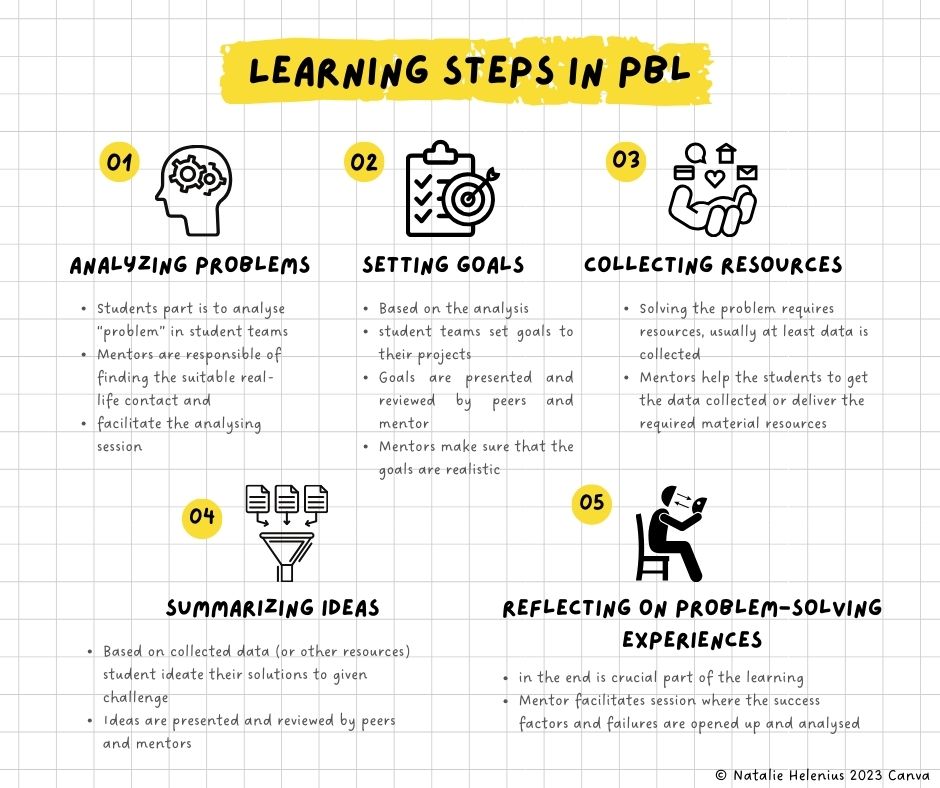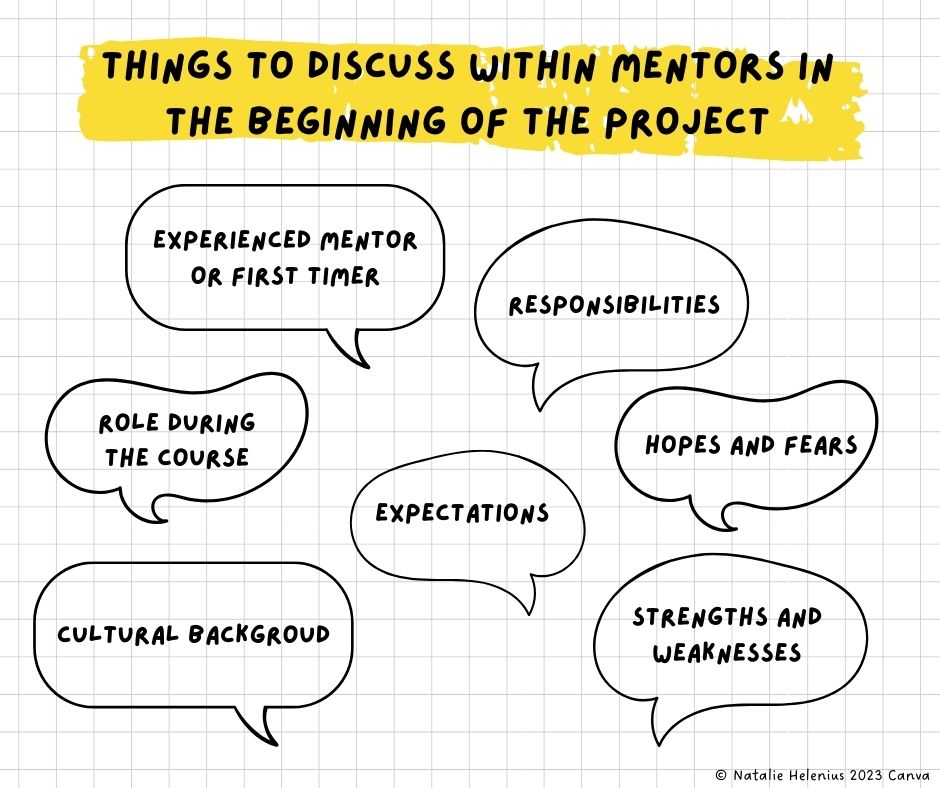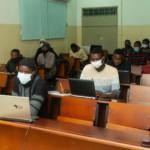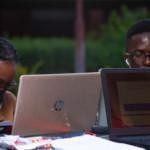
Natalie Helenius, Ulla-Maija Knuutti & Satu Määttänen
Problem-based learning (PBL) is a recommended method to deliver 21st-century skills and transformative competencies needed in the world of work. Reaching the full benefits of PBL requires active facilitation by the teacher — or a mentor, as teachers are often called in PBL. As PBL mentors, we know from experience that this is often easier said than done.
In this article, we share our experiences as PBL mentors. We briefly introduce PBL and the role of mentors in it and provide concrete suggestions on how to facilitate active mentoring in multicultural and multi-mentor settings.
Mentors’ role as a facilitator
PBL is a student-centred, active learning method, used in various disciplines. In PBL, students learn in teams by solving ill-defined, real-life, and open-ended problems. Problem-solving and learning happen through five interlinked steps: (1) analysing the problem, (2) setting the goals, (3) collecting resources, (4) summarising ideas, and (5) reflecting on the experience (Lin et al., 2010; Figure 1).
In PBL, the mentor’s main role and responsibility is to guide students and facilitate their learning. Successful mentoring requires various competencies, characteristics, and modes of delivery. The mentor should encourage self-directed learning and reflection, as well as boost students’ motivation. This can be achieved through listening to the students, politely challenging their thinking, giving constructive feedback and creating a safe learning environment, conducive to learning (Knuutti & Määttänen, 2023).

PBL is becoming increasingly popular, not least because of the learning benefits associated with it (Yew & Goh, 2016). PBL enhances students’ understanding of the core ideas and principles of their discipline and, through its practicality, supports students’ perceptions of themselves as professionals (Hmelo-Silver et al., 2019; Lu et al., 2014). In addition, PBL supports the development of various 21st century skills such as analytical and critical thinking, collaboration, communication, self-direction, leadership and application of information. (Ding et al., 2014; Liu & Pásztor, 2022; Lu et al., 2014; Tan et al., 2014).
The PBL process and subsequent learning outcomes do not operationalise and emerge on their own but require facilitation. Effective and active facilitation by the mentor is essential in PBL (Hmelo-Silver et al., 2019; Liu & Pásztor, 2022).
Yet, for the mentor to facilitate learning, also the mentoring needs to be facilitated. Mentoring need support from the administration as well as from other mentors and peers. Especially in multicultural and multi-mentor settings — with several mentors from different cultures guiding student teams — facilitation of mentoring is crucial to ensure a smooth process and synergistic benefits.
Facilitating mentoring
As part of the AgriSCALE project (www.agriscale.net), and during the period from spring 2022 to spring 2023, we have participated as mentors in five multicultural student challenges. A student challenge is a learning concept — using the PBL approach — in which students from different universities and different countries come together to learn by working with real cases, i.e. scenarios or problems that the students aim to solve (Määttänen et al., 2022b). The cases are implemented in small, multi-cultural and multi-disciplinary student teams. The students’ work is carried out in ‘real life’, often including a fieldwork period of about two weeks.
Within student challenges, each participating university provides at least one mentor. The mentors are jointly responsible for mentoring all student teams, which means that all mentors interact with and guide all student teams.
During and through the student challenges, we have learnt that reaching proper facilitation does not come without effort, but that the mentors also need support and facilitation to be able to subsequently facilitate the students and their learning. We call this the facilitation of mentoring.
In the student challenges, the students come from different countries, cultures, universities, educational backgrounds and levels, and so do the mentors. Therefore, it is important that mentors get to know each other at the beginning of a student challenge. We strongly recommend that mentors not only introduce themselves and their background, but also openly discuss and share their thoughts about the process (Figure 2). Topics and issues to be discussed among mentors at the beginning of the PBL process include division of roles and responsibilities, strengths and weaknesses, hopes and fears, as well as the mentor’s cultural background and background as a mentor.
At the beginning of the joint mentoring process, sufficient time should be devoted to building an efficient mentor team. This can be done by using the same methods as for forming student teams (Määttänen et al., 2022a). The difference between students and mentors in introducing and forming teams is that mentors should take care of this action themselves, whereas students need guidance and support from mentors.
The roles, responsibilities and tasks of the mentors should be agreed upon before the PBL process and should be discussed and modified frequently during the process. In multicultural and multi-university student challenges, there is usually a so-called ‘host university’, which is responsible for the organisation and practical aspects. The host university appoints a coordinator who communicates all relevant information to the participating mentors. This person may also be one of the challenge mentors.
We also recommend that one of the mentors should be in charge of the whole PBL process: making sure that all steps are considered and planned before the course starts. Another mentor could supervise the learning methods, tools and tasks and explain them to the students. All mentors should take responsibility for creating a safe and motivating learning environment. The workload of the participating mentors should be equally shared.

Due to the multiculturality of the student challenge and among the mentors, there is a high probability of an unclear hierarchy among the mentors, which can hinder cooperation and information sharing, and thus the progress and success of the whole student challenge. Cultural norms regarding, for example, the negotiating power of different genders, age groups or professional titles can vary widely. To avoid misunderstandings and related offence and conflict, and to enhance cooperation, it is recommended that mentors agree on basic house rules at the very beginning of the student challenge process. The rules can include aspects such as how decisions are made, and conflicts are resolved among the mentors and how they communicate with other stakeholders.
Communication is the key
Despite extensive planning and follow-up, something unexpected is likely to happen during the PBL process. Participants may fall ill, external events may create challenges, or students may need more support than expected, to name a few. To face and overcome these challenges, mentors should have regular discussions. These discussions do not have to be long and extensive, but mentors can, for example, organise a short 15–30-minute catch-up meeting each day, where each mentor shares his/her feelings and concerns. This is likely to increase tolerance and adaptability to changing situations. Longer and more in-depth mentor meetings focusing on overall project issues, timetables and regular evaluation of student progress and mentoring effectiveness can be arranged less frequently, e.g., every other week or once a month, depending of course on the length of the student challenge.
The importance of communication between mentors should not be underestimated. Mentors are often busy, they may feel they have more important things to do, and it can be difficult to find a time that works for everyone. However, a lack of communication often not only causes stress, but also slows down the PBL process and ultimately leads to an increase in the amount of time needed to complete the process. From the students’ point of view, stressed and out-of-date mentors are not able to provide the support and may even be detrimental to the students’ learning process.
Well facilitated and implemented mentoring will take effort, especially in the early stages, but we can guarantee that it will be worth it. Successful mentoring is rewarding and creates a sense of achievement not only for the mentors but also for the students.
Authors
Natalie Helenius, B.Sc. in Sustainable Development from Häme University of Applied Sciences. She mentored Student Challenges.
Ulla-Maija Knuutti, M.Sc. In Rural Development from Häme University of Applied Sciences. She works as a Senior Lecturer in HAMK Edu Research Unit.
Satu Määttänen, M.Sc. in Agricultural Sciences and M.Sc. in Environmental Science and Policy from University of Helsinki. She works as a Research Assistant in Häme University of Applied Sciences at Bio Research Unit.
References
Ding, X., Zhao, L., Chu, H., Tong, N., Ni, C., Hu, Z., Zhang, Z., & Wang, M. (2014). Assessing the effectiveness of problem-based learning of preventive medicine education in China. Scientific Reports, 4(1), 5126. https://doi.org/10.1038/SREP05126
Hmelo-Silver, C. E., Bridges, S. M., & McKeown, J. M. (2019). Facilitating Problem-Based Learning. In M. Moallem, W. Hung, & N. Dabbagh (Eds.), The Wiley Handbook of Problem-Based Learning (pp. 297–319). John Wiley & Sons, Incorporated. https://doi.org/10.1002/9781119173243
Knuutti, U.-M., & Määttänen, S. (15.3.2023). What makes a good mentor in problem-based learning? HAMK Beat. https://blog.hamk.fi/hamk-beat/what-makes-a-good-mentor-in-problem-based-learning/
Lin, C. F., Lu, M. S., Chung, C. C., & Yang, C. M. (2010). A comparison of problem-based learning and conventional teaching in nursing ethics education. Nursing Ethics, 17(3), 373–382. https://doi.org/10.1177/0969733009355380
Liu, Y., & Pásztor, A. (2022). Effects of problem-based learning instructional intervention on critical thinking in higher education: A meta-analysis. Thinking Skills and Creativity, 45, 101069. https://doi.org/10.1016/J.TSC.2022.101069
Lu, J., Bridges, S., & Hmelo-Silver, C. E. (2014). Problem-Based Learning. In R. K. Sawyer (Ed.), The Cambridge Handbook of the Learning Sciences (2nd ed., pp. 298–318). Cambridge: Cambridge University Press. https://doi.org/10.1017/CBO9781139519526
Määttänen, S., Knuutti, U.-M., & Laitinen, E. (2022a). Building effective student teams in problem-based learning. HAMK Unlimited Professional, 26.9.2023. https://urn.fi/URN:NBN:fi-fe2022062047879
Määttänen, S., Knuutti, U.-M., & Laitinen, E. (2022b). Piloting international student challenges: results on students’ perspective. HAMK Unlimited Professional, 26.9.2022. https://urn.fi/URN:NBN:fi-fe2022062047869
Tan, D. K., Koppi, A., & Field, D. J. (2014). The student perspective in developing graduate attributes through problem-based learning in first year agricultural science. Proceedings of The Australian Conference on Science and Mathematics Education, 170–175. https://openjournals.library.sydney.edu.au/index.php/IISME/article/view/7784
Yew, E. H. J., & Goh, K. (2016). Problem-Based Learning: An Overview of its Process and Impact on Learning. Health Professions Education, 2(2), 75–79. https://doi.org/10.1016/J.HPE.2016.01.004





